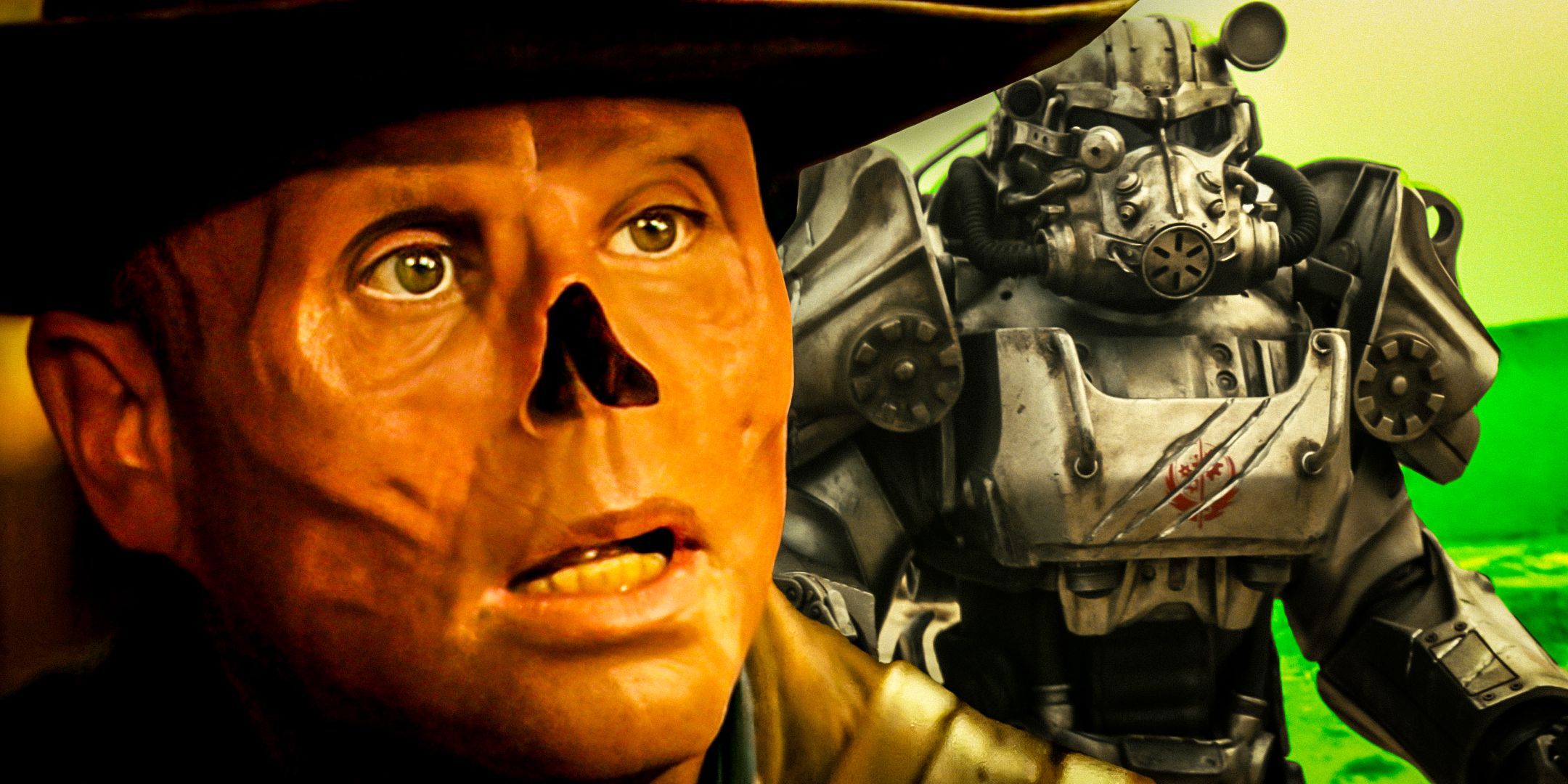
Different mediums have different rules when it comes to storytelling. For instance, life and death aren’t necessarily represented in the same way in a video game as they are in a TV show. Fallout‘s penchant for consistency across the franchise should be respected, as it makes going between the games and the show a much more immersive and rewarding experience. If the Fallout show had capitulated and decided to tweak the show so it aligned more with “realistic” ideals, it wouldn’t have turned out quite so special.
Dogmeat Was immediately Healed By The Ghoul’s Use Of A Stimpak
The Stimpak quickly brought CX404 back from the brink of death
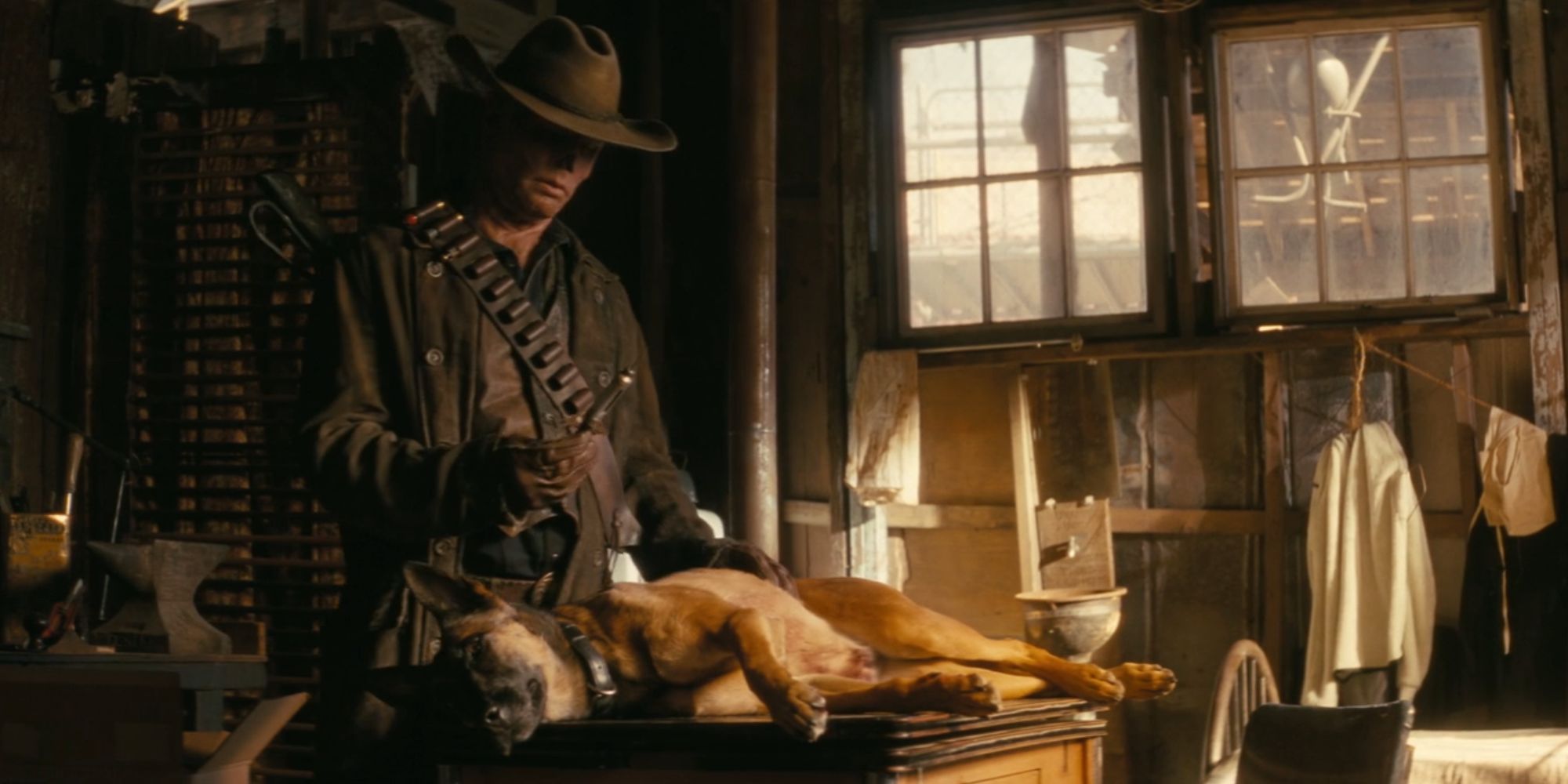
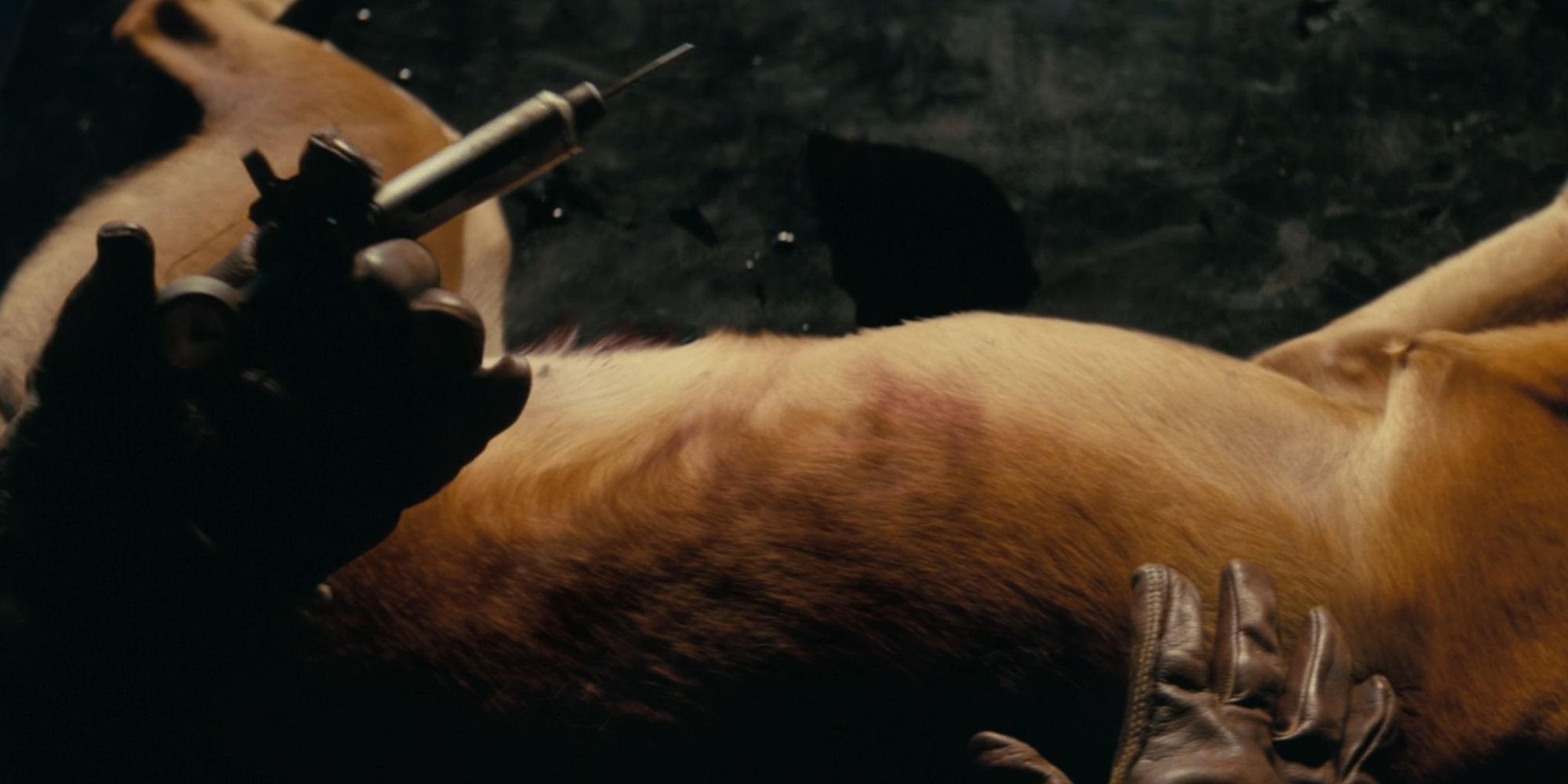
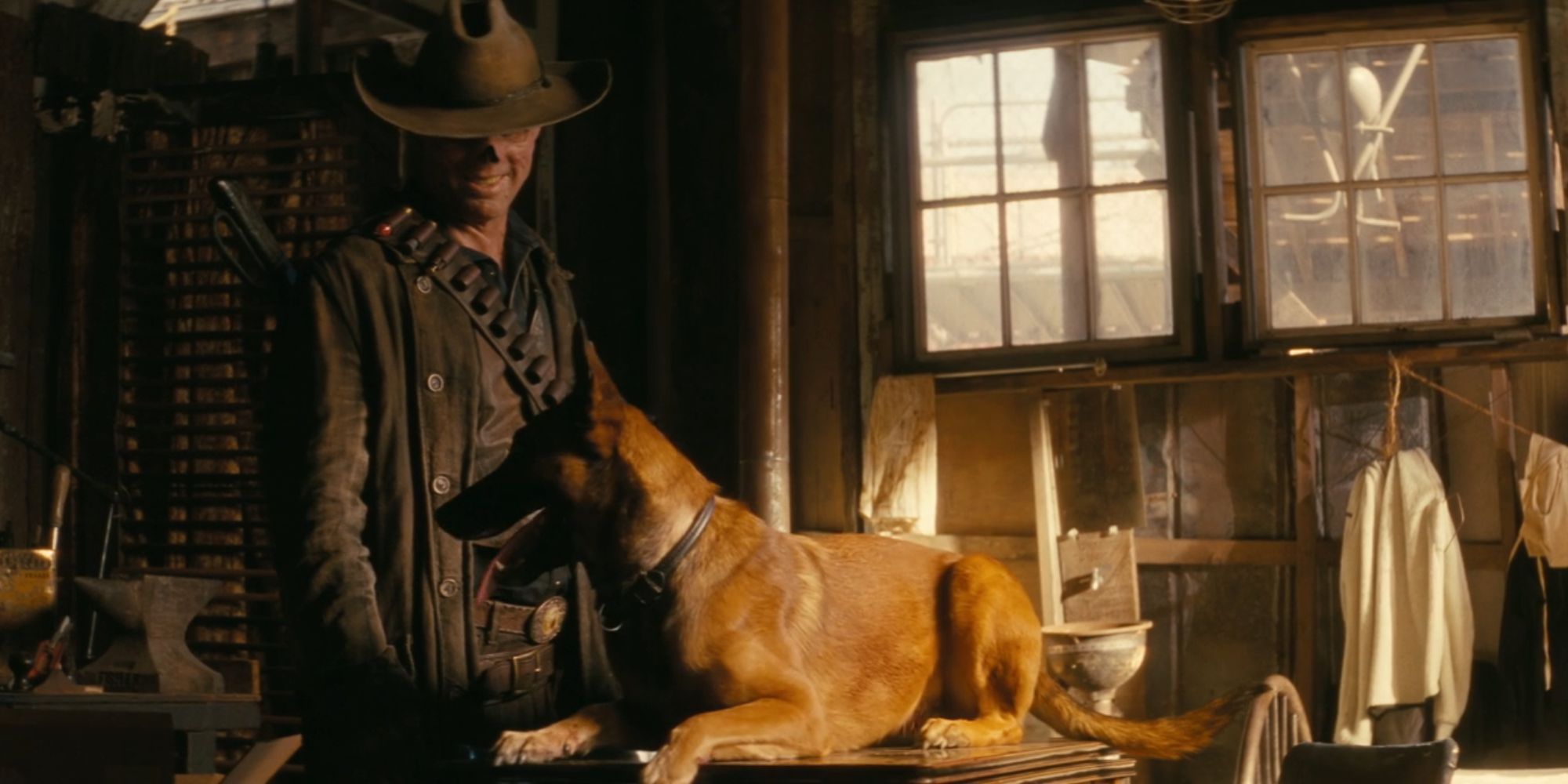



Extensive wounds require time to fully heal in the real world. This basic fact of existence often makes its way into live-action adaptations like Fallout. However, the Prime show’s decision to place itself with the games’ continuity meant it had a get-out clause when it comes to getting characters back on their feet in no time: Stimpaks. As one of the most well-known Fallout consumables, Stimpaks heal with unrealistic speed and efficacy, and that can be witnessed when Walton Goggins’ Ghoul uses one on Dogmeat/CX404 in Fallout season 1, episode 2, “The Target.”
In the real world, Dogmeat’s injuries would have taken weeks or possibly months to heal, if the pooch had survived at all.
In the real world, Dogmeat’s injuries would have taken weeks or possibly months to heal, if the pooch had survived at all. It’s also possible some surgical intervention would be necessary. A quick injection from a syringe filled with a dubious compound would likely have made things much worse or even had no effect whatsoever. That being said, because rapid healing is a very common gaming mechanic that the Fallout source material makes use of, the same logic exists in the world of the show.
Lucy MacLean’s Radiation Sickness Is Cured With Medication From The Fallout Games
RadAway can be self-administered in the world of Fallout
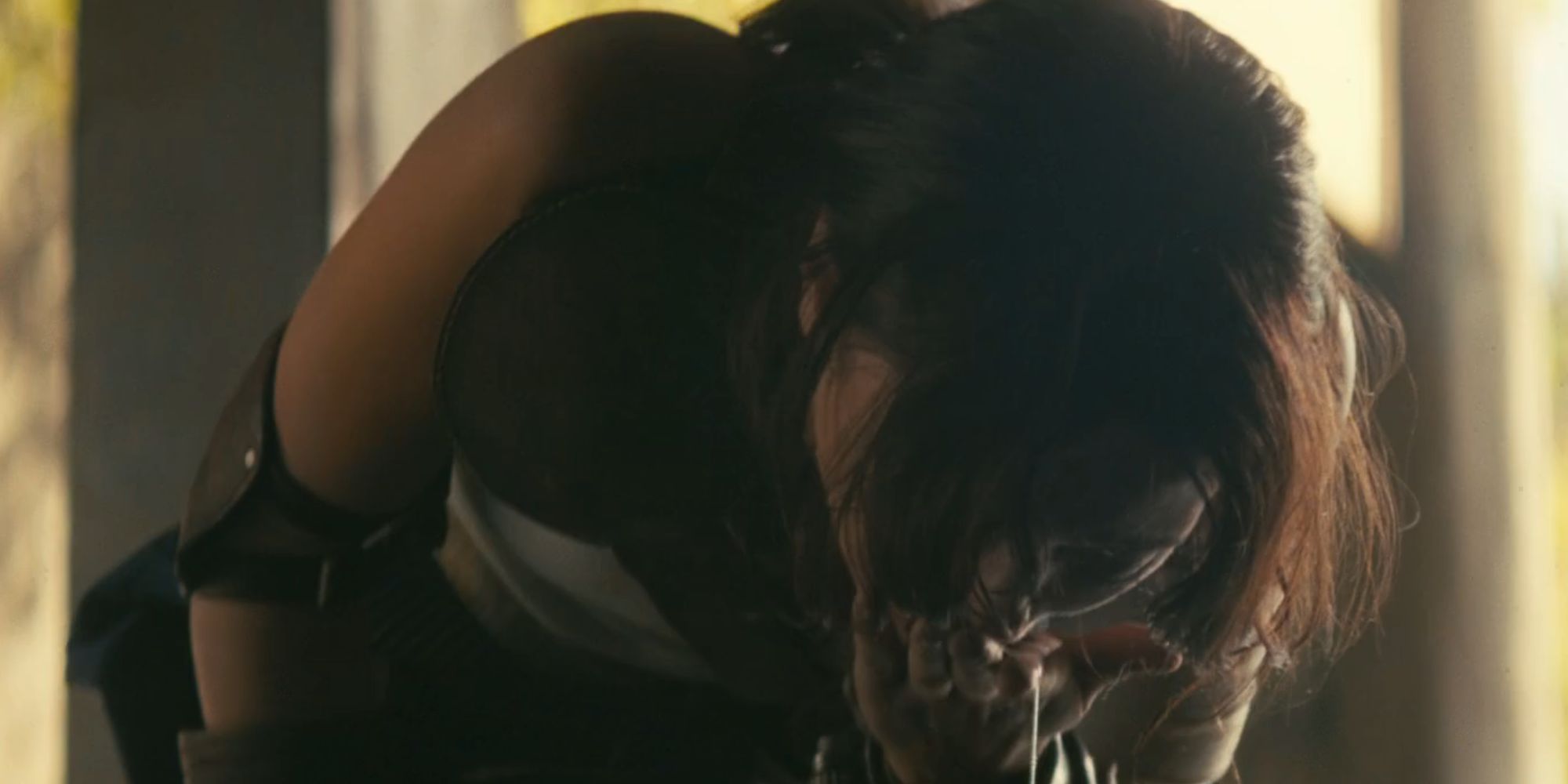
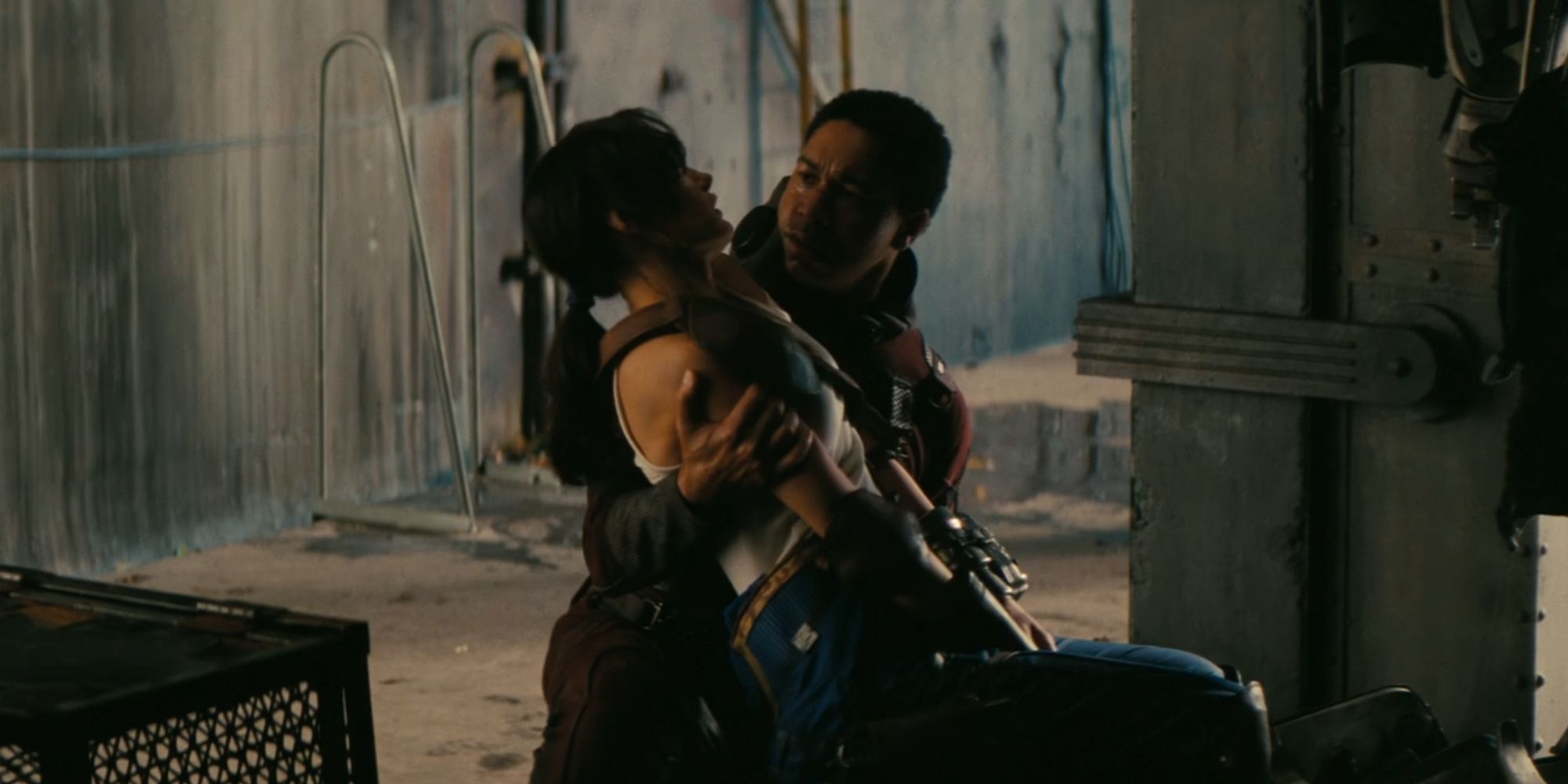
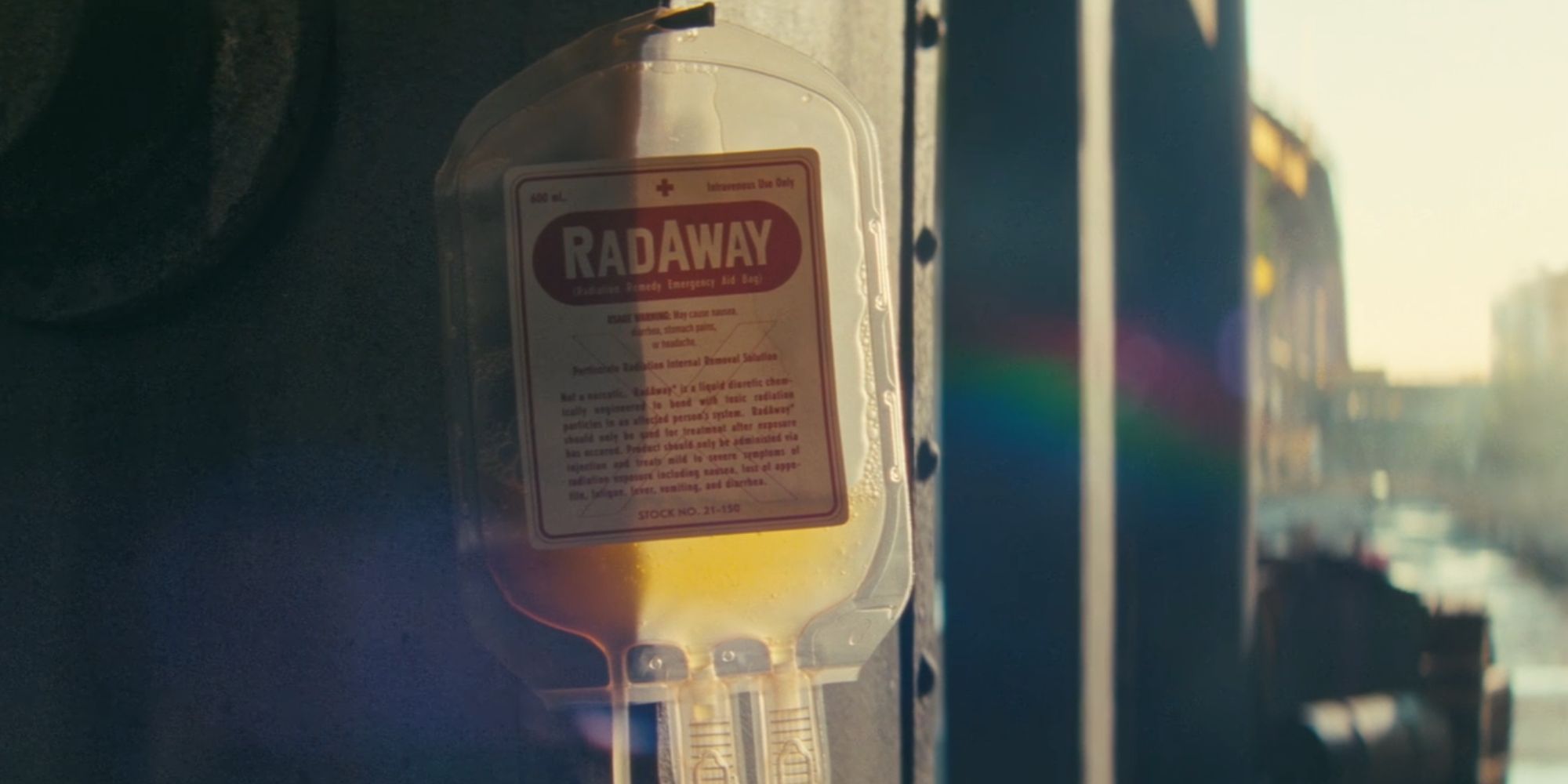

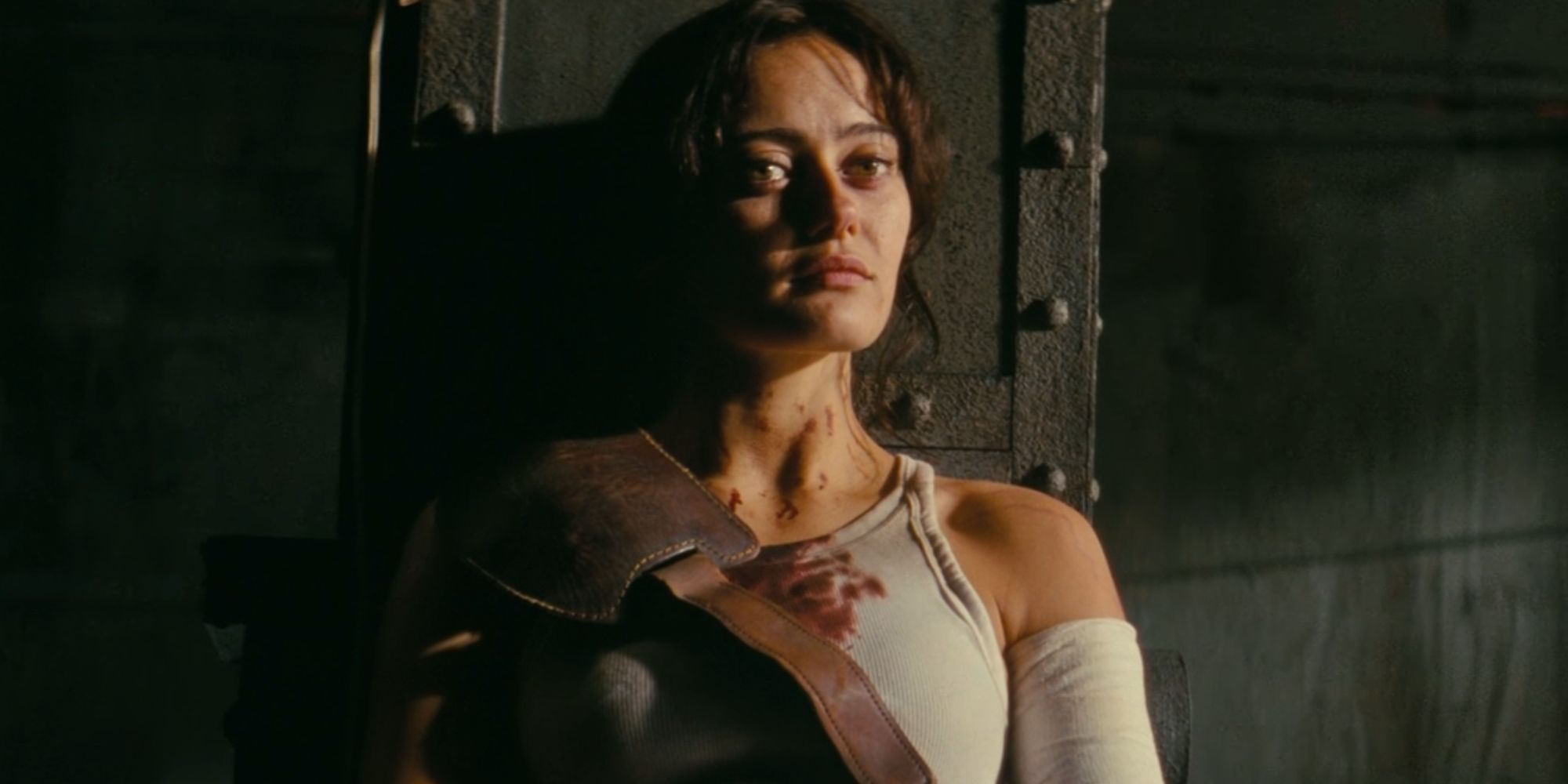





Radiation sickness doesn’t tend to occur all too often in everyday life, but in the world of Fallout, it’s an ongoing possibility due to the nature of the characters’ surroundings. Because of the ubiquity of the condition, a compound called RadAway was developed to flush the radiation from the sufferer’s body. It can be seen in action in Fallout season 1, episode 5, “The Past,” when Aaron Toten’s Maximus administers RadAway to Ella Purnell’s Lucy MacLean, who is in the throes of radiation sickness.
RadAway is administered intravenously, and while it can be self-administered in the games, Lucy’s unconsciousness prevents her from helping herself.
RadAway is administered intravenously, and while it can be self-administered in the games, Lucy’s unconsciousness prevents her from helping herself. Untreated radiation sickness eventually kills a Fallout character as it would someone in the real world, so if Maximus hadn’t been there to administer the RadAway, it would have likely been the end of the line for Lucy MacLean.
The Ghoul’s Fight With Maximus In Power Armor
Walton Goggins’ Fallout character is likely at max power due to his age and experience
When Maximus and the Ghoul face off in Fallout season 1, episode 2, “The Target,” Maximus looks to have a huge advantage because of his power armor. Interestingly, the Ghoul comes out on top, and he wins by a much wider margin than one would expect. This is because a Fallout game mechanic can easily explain the dominance of Walton Goggins’ character. The show does a great job of capitalizing on Maximus’ inexperience with the power armor, but there’s actually a much more game-logic-focused reason for his loss.
Because Goggins’ Ghoul has been alive for around two centuries, it’s very likely he’s the strongest a Fallout character can be.
Fallout players and Non-player characters (NPCs) aren’t all equal in their strength. As they progress through the game, they become more skilled, gain endurance, and overall become more formidable opponents. Because Goggins’ Ghoul has been alive for around two centuries, it’s very likely he’s the strongest a Fallout character can be. Because of Maximus’ age and lack of combat experience, the Power Armor still doesn’t give him enough of an edge to defeat his opponent in “The Target.” If Fallout‘s game rules weren’t at play in the show, the Ghoul would likely have had a greater chance of being defeated.
Lucy MacLean’s Introduction Is Quietly A Rundown Of Her Fallout Character Build
Ella Purnell’s character takes the viewers through her SPECIAL stats
After the 219-year time jump in Fallout season 1, episode 1, “The End,” Ella Purnell’s Lucy MacLean offers a meta introduction that makes it relatively easy to decide her character build. In the Fallout games, the SPECIAL system allows players to assign stats to seven categories, which directly impacts how the controllable character interacts with the world around them. Lucy doesn’t give exact figures of her Fallout character build, as that would be a little on the nose, but she gives a decent overall impression.
Strength
Perception
Endurance
Charisma
Intelligence
Agility
Luck
Generally, once assigned, these specifications remain locked in throughout the Fallout games, although other skills and abilities can be upgraded. Certain parts of Lucy’s introductory montage give a relatively clear idea of what some of her SPECIAL stats could be. For instance, she modestly says her science skills are “Nothing compared to [her] dad’s,” which implies she is intelligent, but her father is cleverer. Similarly, Lucy claims to be “Not very good” at shooting, and yet hits the bullseye with every shot. The implication here is her Luck stat is very high.
Norm Plays The Fallout Minigame When Hacking The Overseer’s Terminal
Norm MacLean solves the puzzle very quickly




Important pieces of hardware that house sensitive information, like an Overseer’s terminal, aren’t immediately accessible to just anybody. In the games, there’s a short minigame that needs to be completed each time access is restricted to a specific terminal. Cybersecurity is a strange concept in the world of video games, as the game wants players to access the terminal, but it has to make it seem as though there are sufficient preventative measures in place. In the Fallout minigame, it’s a matter of working out which of the passwords shown on the screen is the correct one.
In reality, this would obviously be an incredibly irresponsible way of keeping data secure. Unfortunately, because the Fallout show and games are playing by the same rulebook, the live-action adaptation has to adopt the same procedure. Moises Arias’ Norman “Norm” MacLean can be seen playing the minigame while hacking the Overseer’s terminal in Fallout season 1, episode 7, “The Radio.” Granted, he’s very adept at it and solves the puzzle quickly, but it’s the exact same mechanic from the games.
The Snake Oil Salesman Uses The Fallout Games’ Brewing Mechanic To Heal Thaddeus’ Foot
Thaddeus benefits from the Fallout game logic and avoids losing his foot
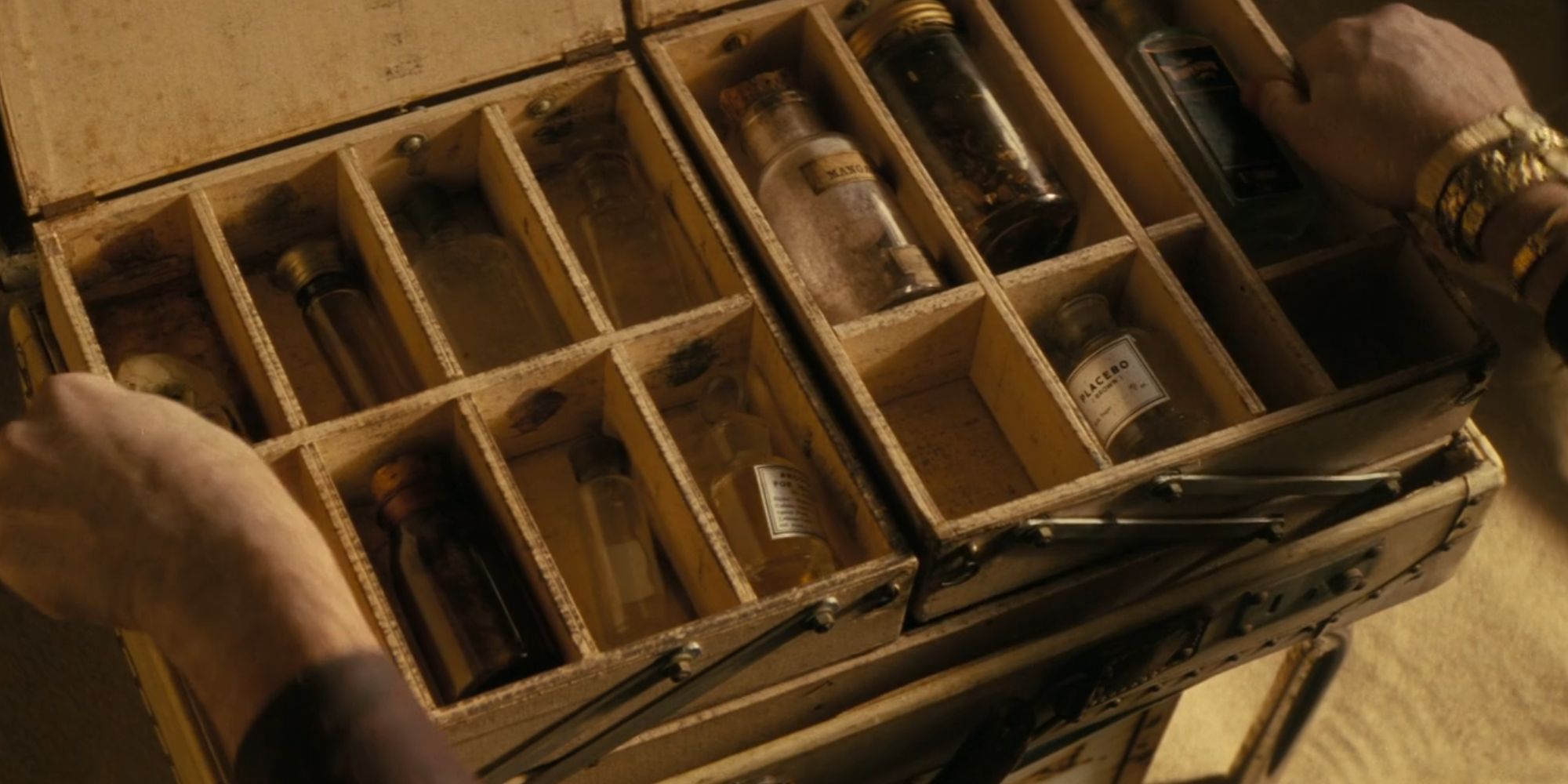
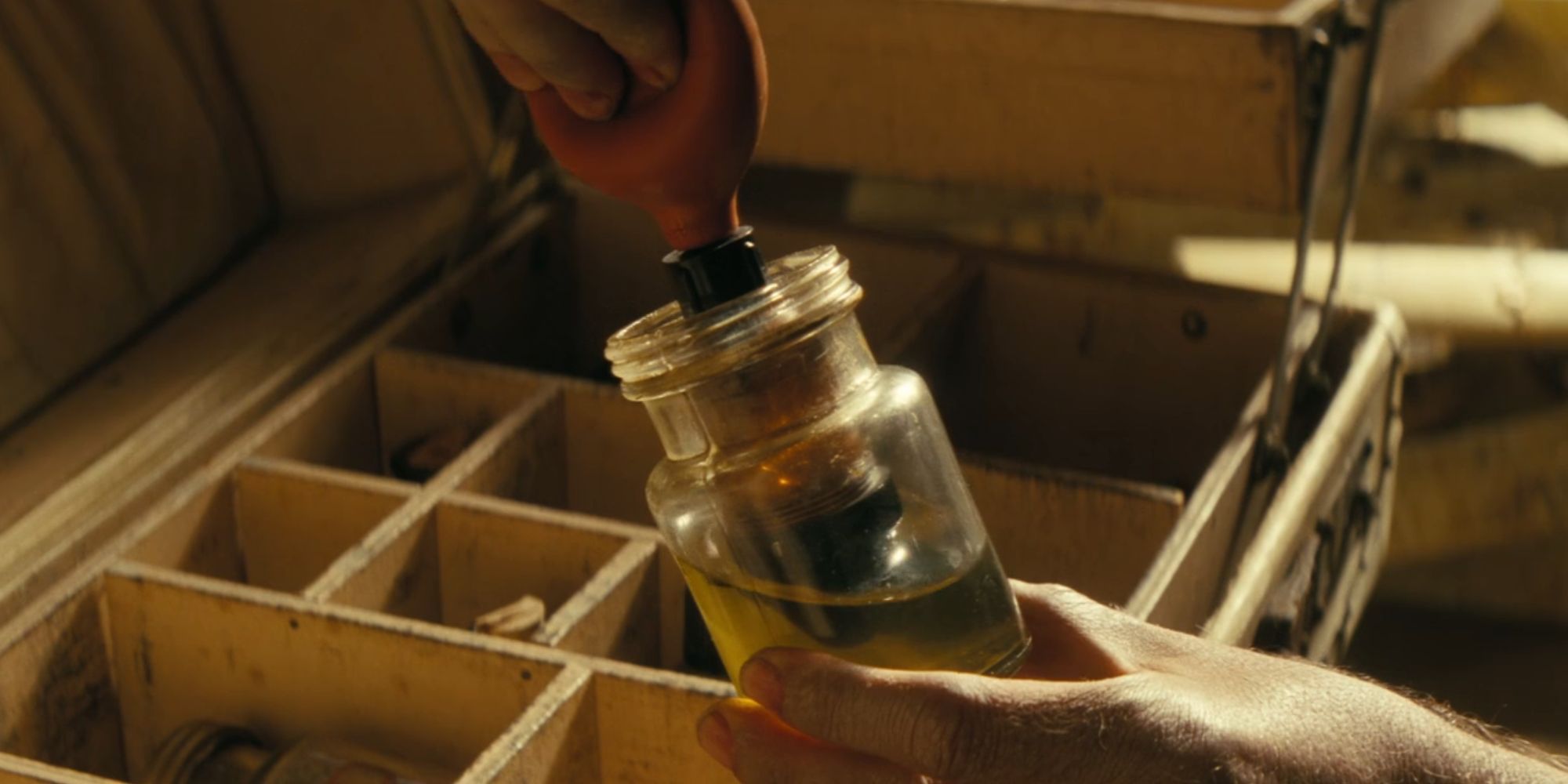
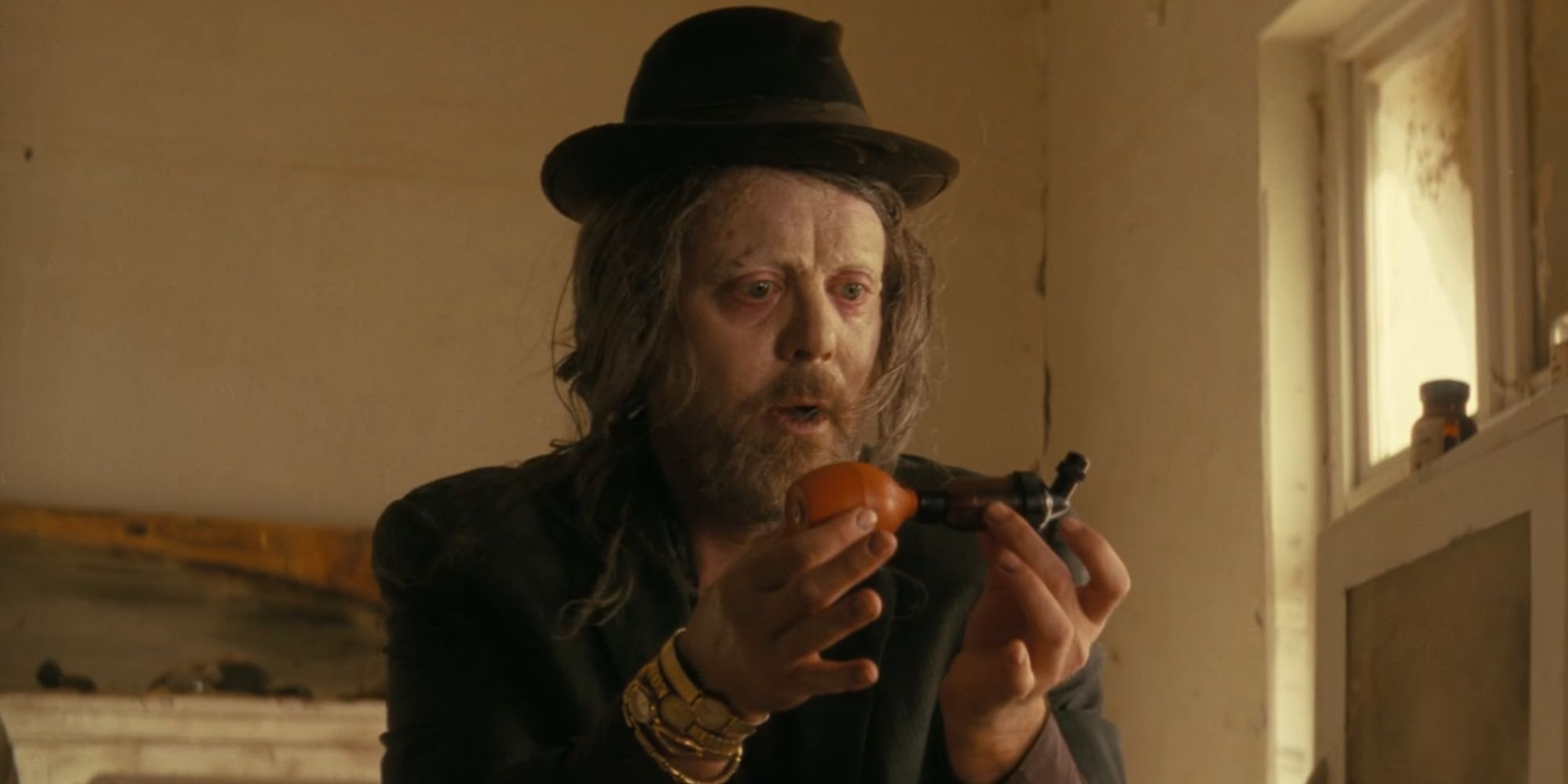
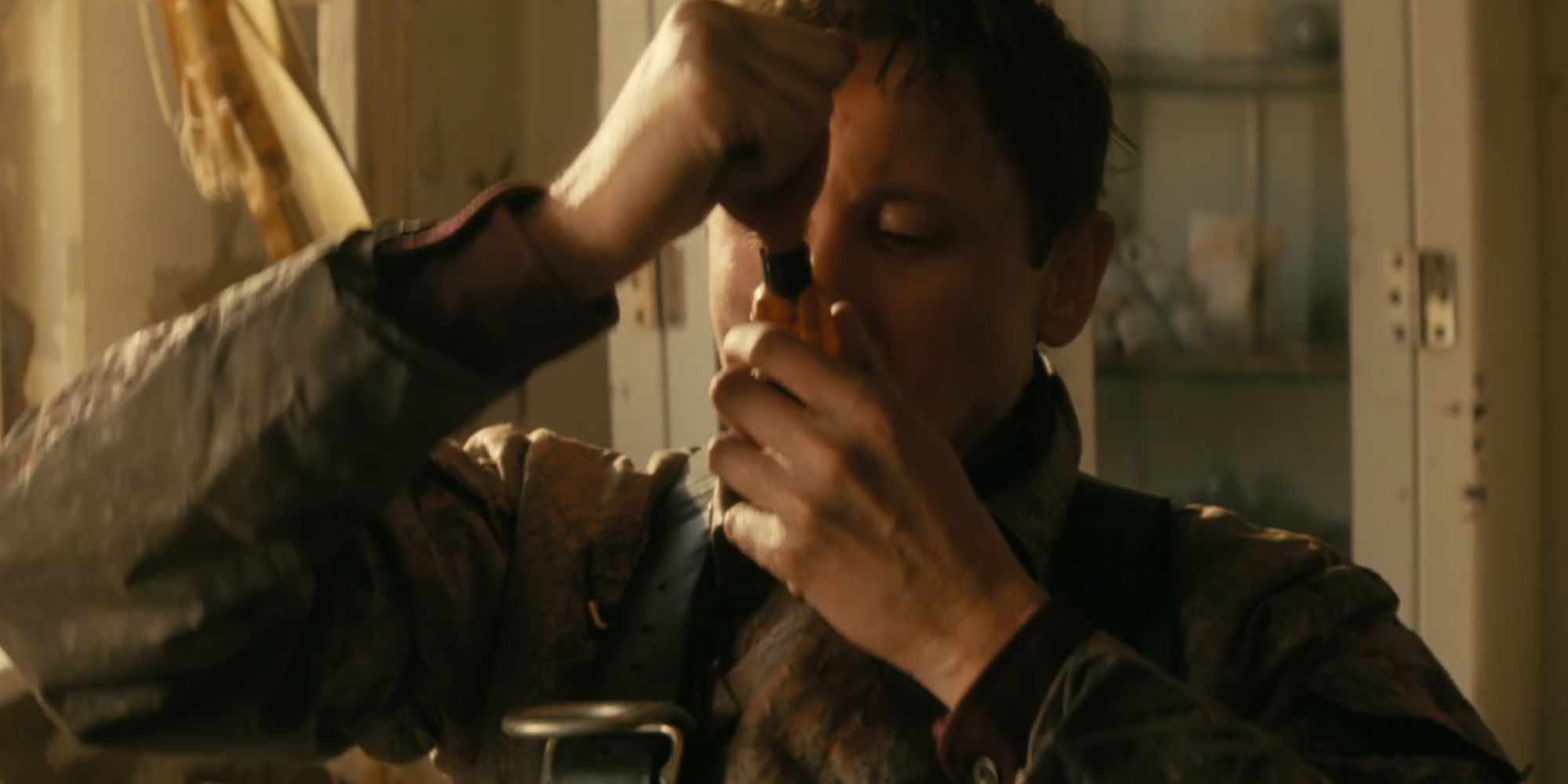
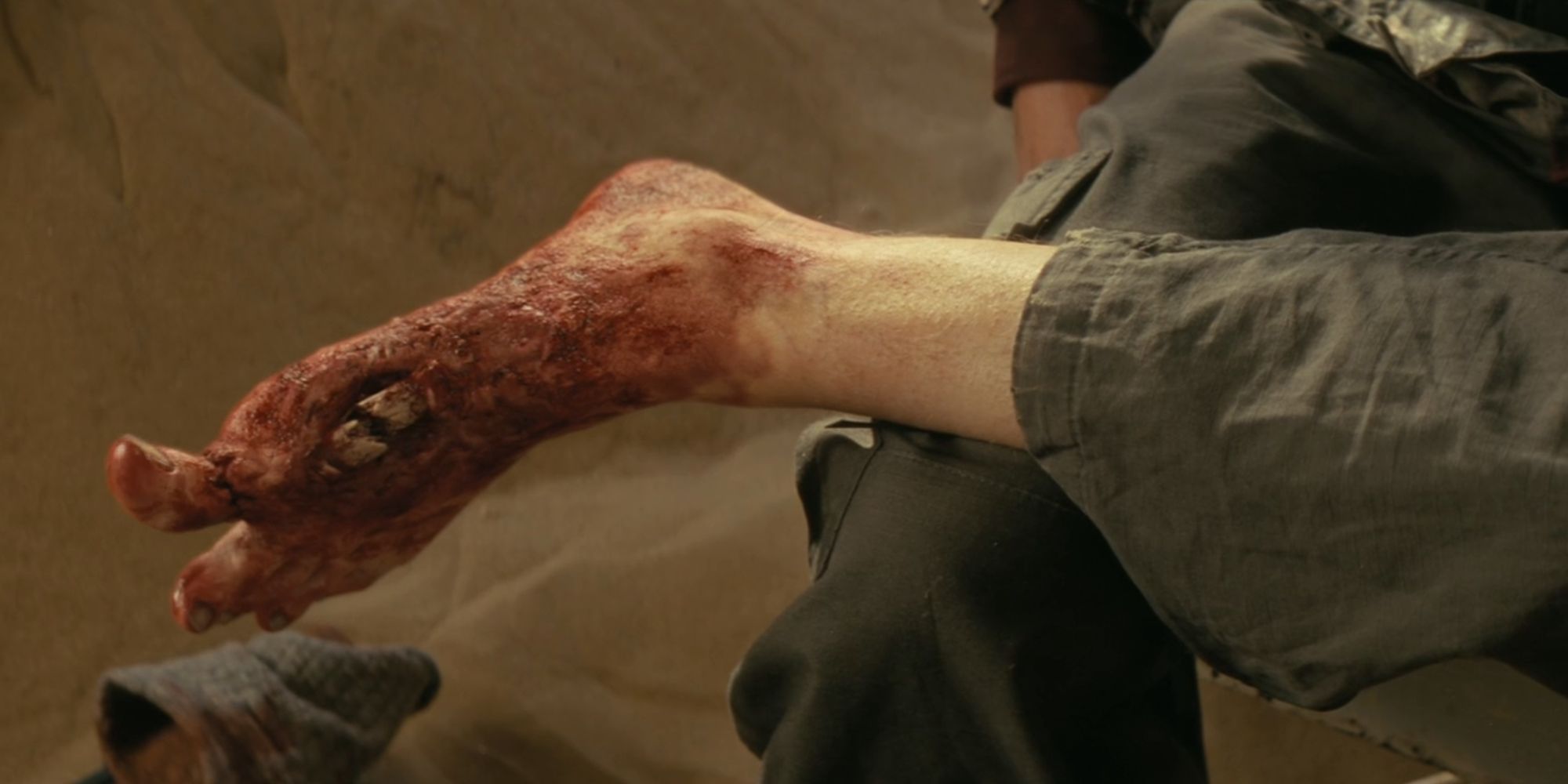





Jon Daly’s Snakeoil Salesman appears in two episodes of Fallout, and the initial impression he gives is that of a scam artist. Eventually, he gets the chance to prove he’s actually pretty good at whipping up bespoke remedies for severe and specific issues. Johnny Pemberton’s Thaddeus foot is in rough shape in Fallout season 1, episode 7, “The Radio,” and he turned to Daly’s character for assistance. The Salesman’s concocting sequence may seem random, but it’s a live-action representation of how various potions are brewed in the Fallout games.
After inhaling the vapor given to him by the Snakeoil Salesman, Thaddeus’ bloody compound fracture reverts to its uninjured state as if by magic.
After inhaling the vapor given to him by the Snakeoil Salesman, Thaddeus’ bloody compound fracture reverts to its uninjured state as if by magic. Injuries need to be handled quickly in video games, or they negatively impact the player’s experience. So, the brewing mechanic allows various cures and preventative medications to be produced. This scene is another example of the quirk leaping from the game to the show. It may seem convenient to the initiated, but it’s just the Fallout show being faithful to the source material.
Knight Titus’ Hasty Retreat From A Yao Guai (Despite Wearing Power Armor)
Michael Rapaport’s Fallout character flees the scene just like a Fallout player might do
When strutting around in Power Armor in the Fallout games, it’s easy to feel indestructible when there are no enemies nearby. Even when a foe does present itself, victory looks to be a sure thing. Therefore, it can be incredibly humbling when the first few blows don’t do the job. Before long, the plan becomes to run in the opposite direction, spouting obscenities in fear. While Michael Rapaport’s Knight Titus is looked up to as a fierce warrior, the Fallout show quickly puts him on the same level as many others who’ve played the games.
Enhanced strength aside, it would seem an irradiated bear would have an advantage when up against a Power Armored-human.
Enhanced strength aside, it would seem an irradiated bear would have an advantage when up against a Power Armored-human. In Fallout season 1, episode 2, “The Target,” Titus’s retreat after a short and unsuccessful skirmish is incredibly reflective of the panic felt by a player when they come up against an unexpected enemy that’s large in stature. Maximus even proves the bear can be defeated with a couple of well-placed gunshots, but that sort of levelheadedness just isn’t that easy to find in the heat of a Fallout battle.
Wilzig’s Function-Over-Form Prosthetic Leg Is Very In-keeping With Fallout’s Field Medic Approach To Medical Care
The painful-looking solution is original to the Fallout TV show
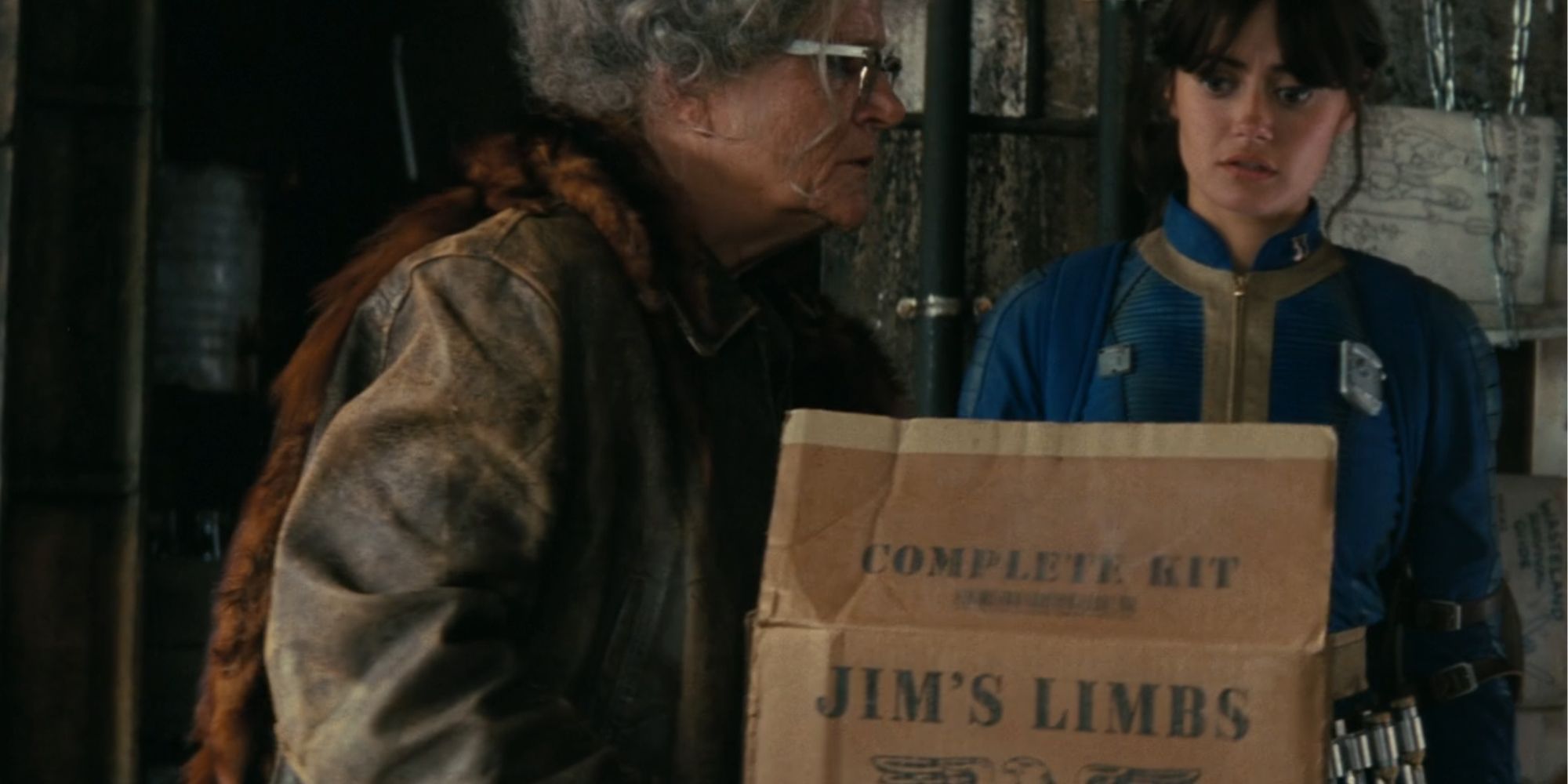
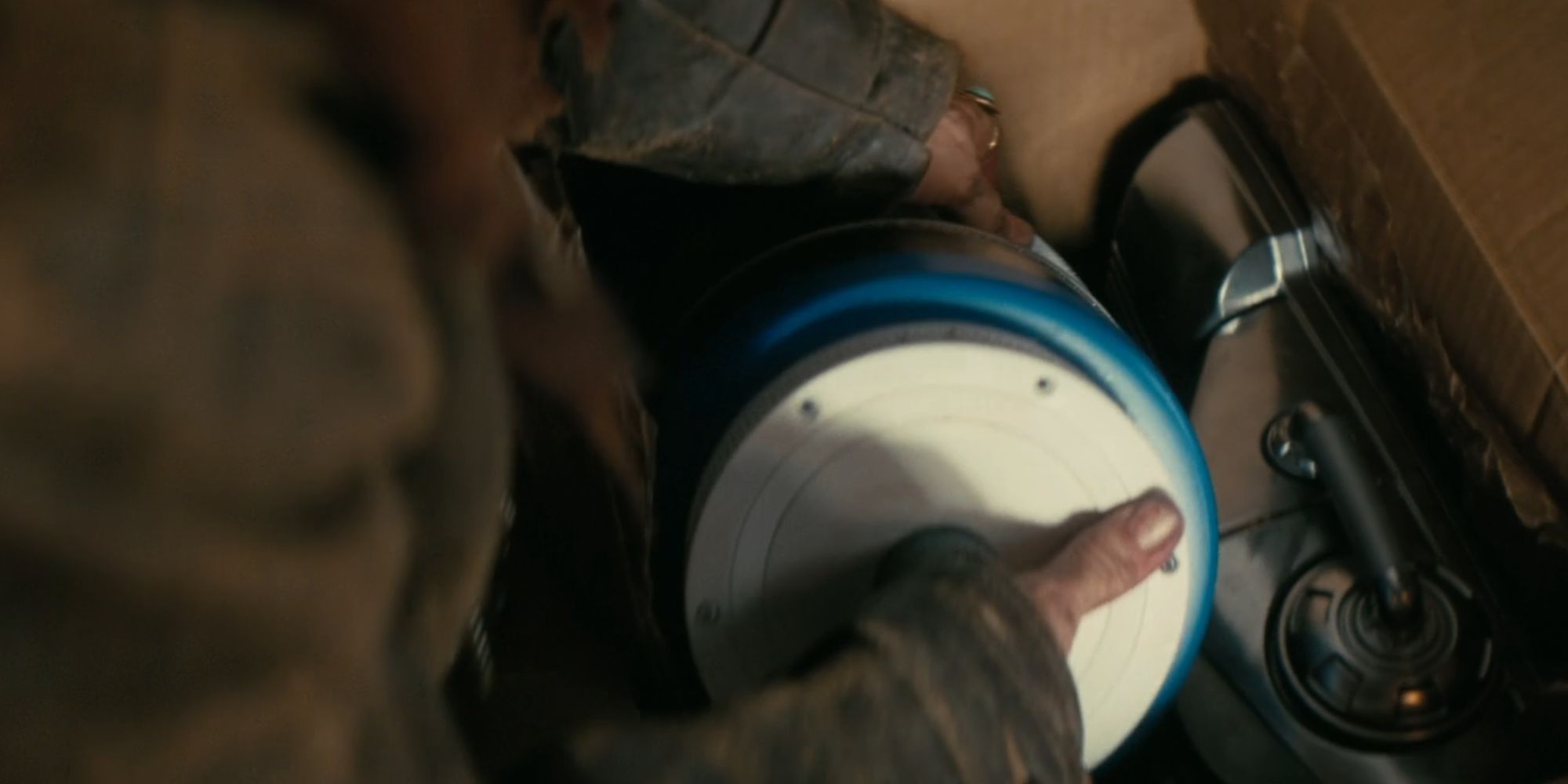
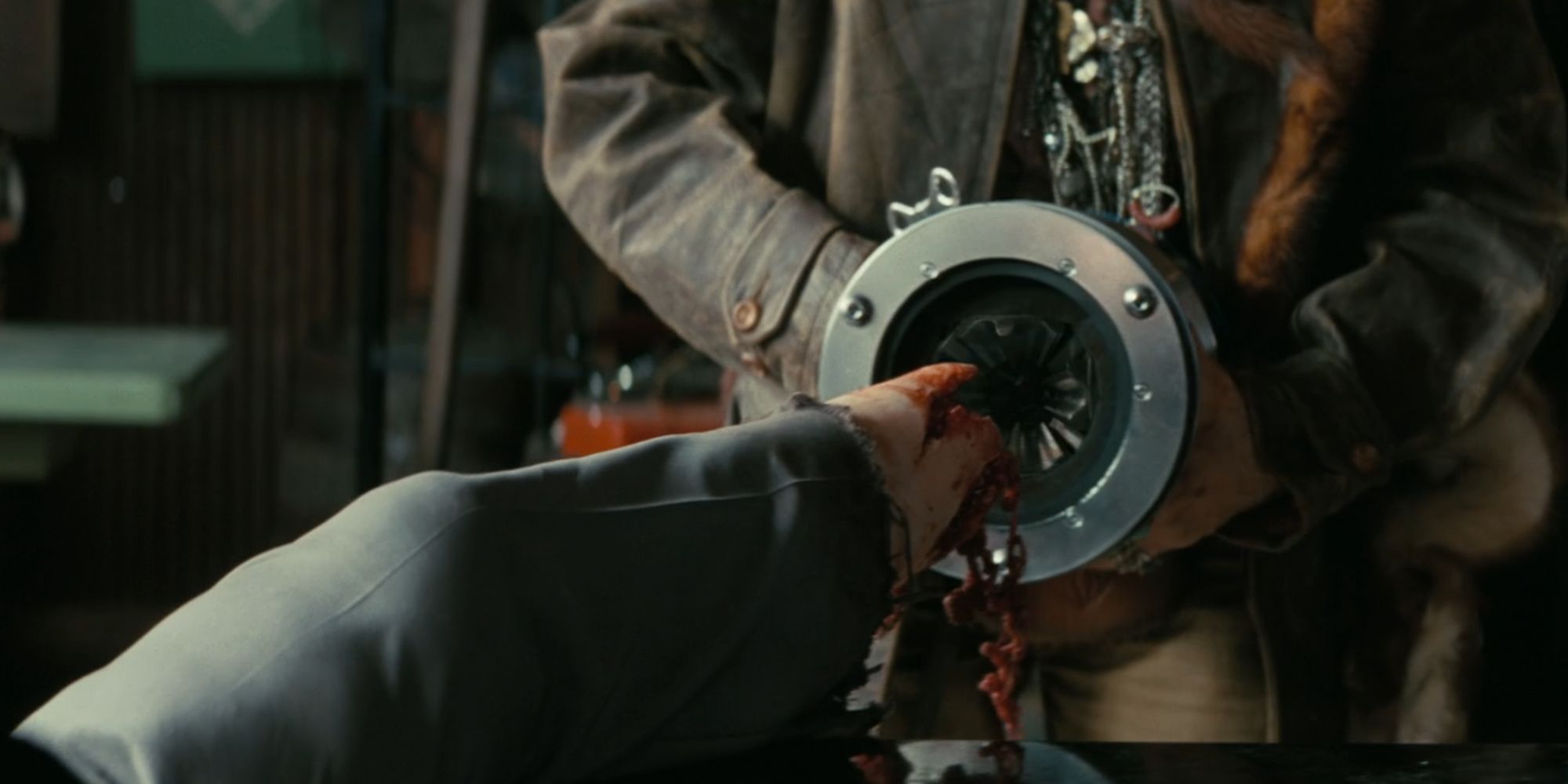
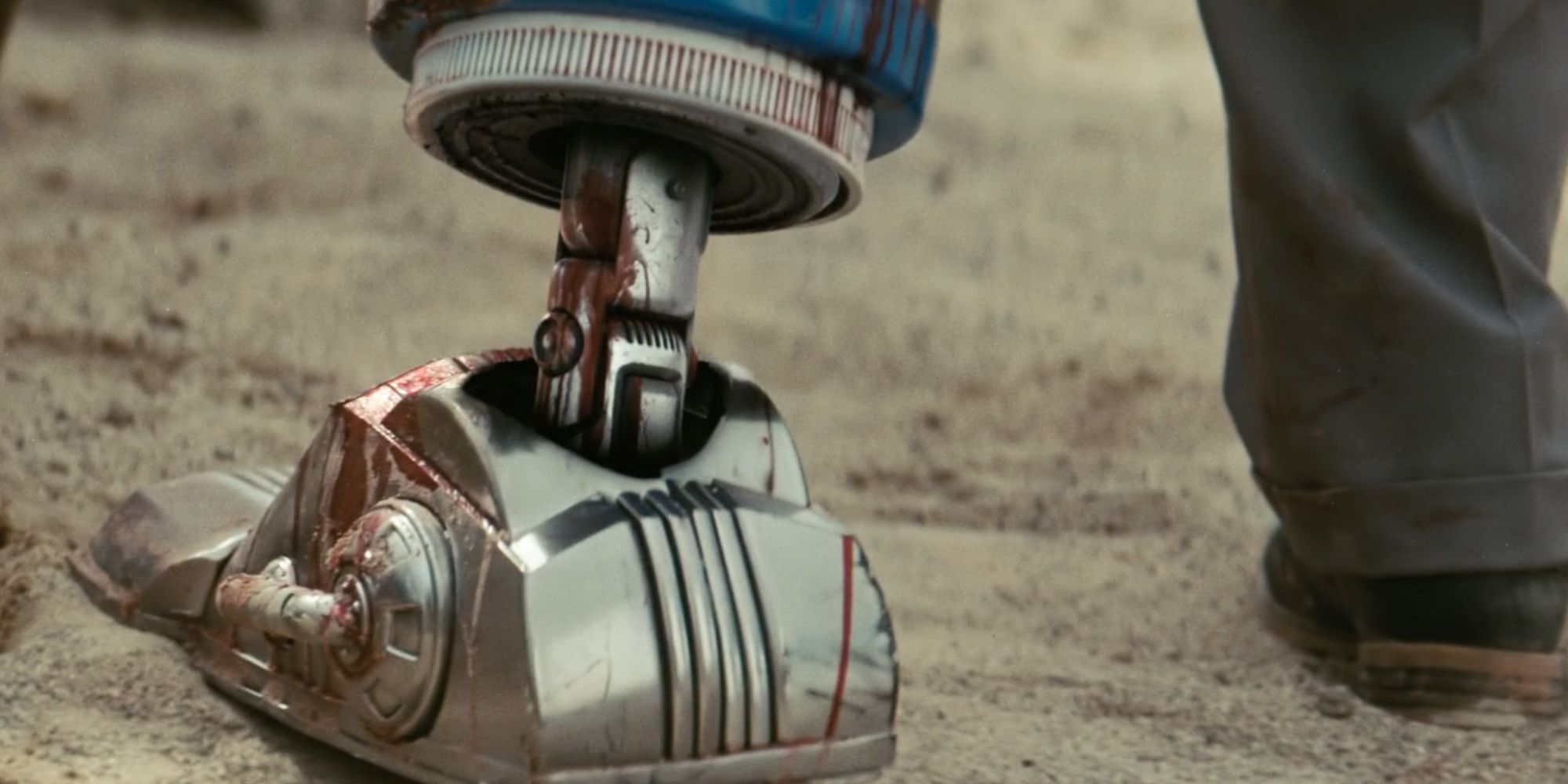
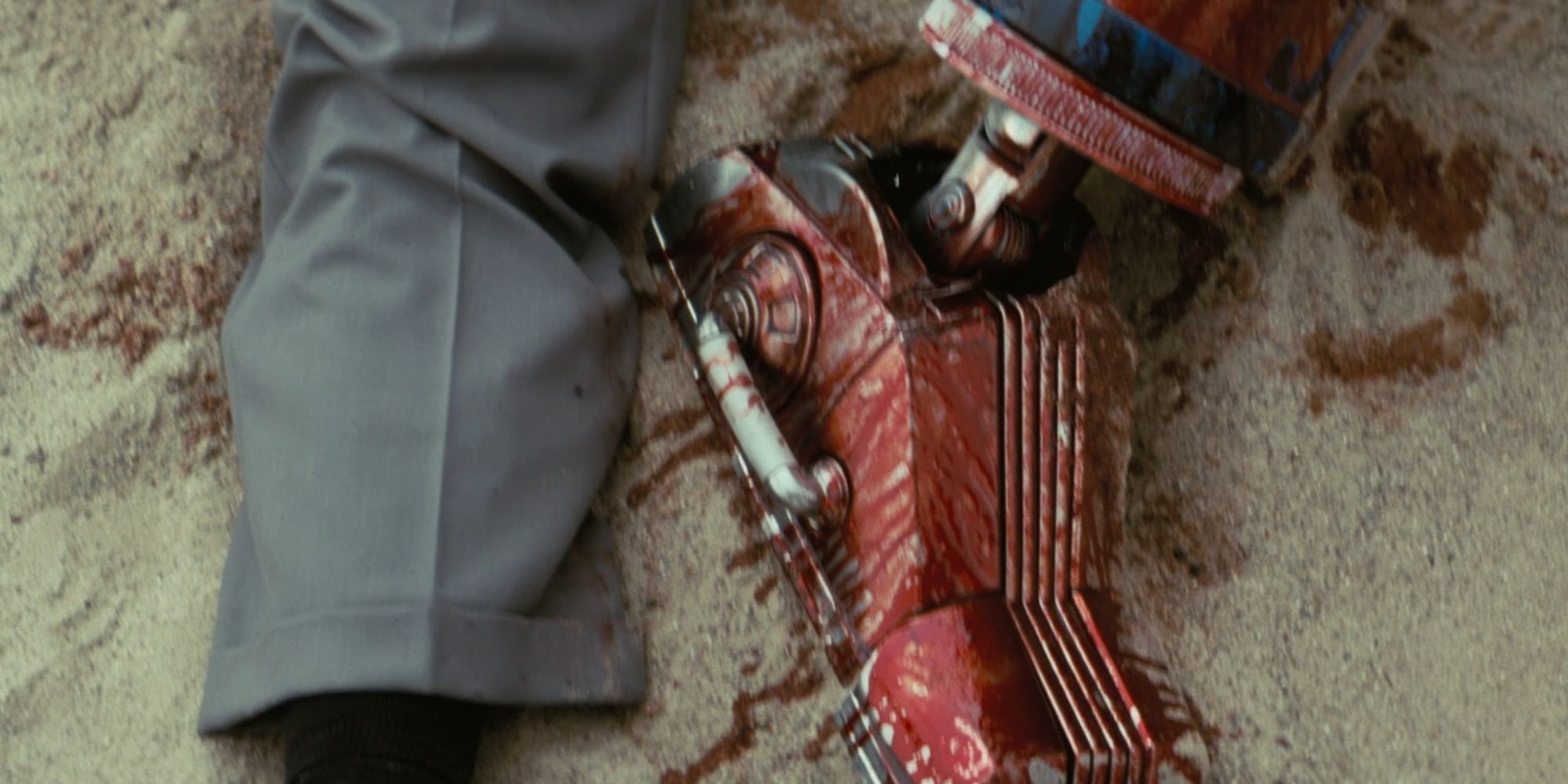





The “Jim’s Limbs” prosthetic leg brutally applied to Michael Emerson’s character in Fallout season 1, episode 2, “The Target,” isn’t in the games. That being said, it would fit right in with the source material. As with every other Fallout injury and ailment, Wilzig’s loss of limb is deemed too extreme to leave untended and is therefore rectified in an incredibly violent fashion. The player’s limbs can be individually injured in the source material, but for practical reasons, they can’t be completely lost. If they could, the metallic limb given to Wilzig would definitely be the kind of remedy available.
Because Jim’s Limbs have appeared on the Prime show, that means that they now also exist within the world of the games.
Because Jim’s Limbs have appeared on the Prime show, that means that they now also exist within the world of the games. So, this is a rare instance of the universe’s extension adding to the lore of the source material – other than new characters and the events their interactions cause. The device isn’t all that useful, as it barely allows Wilzig to flee the scene of the battle. Regardless, it’s certainly easy to imagine the product on the shelf of a store in the games.
Fallout Season 1 Replicates The Games’ Fresh Approach To Storytelling
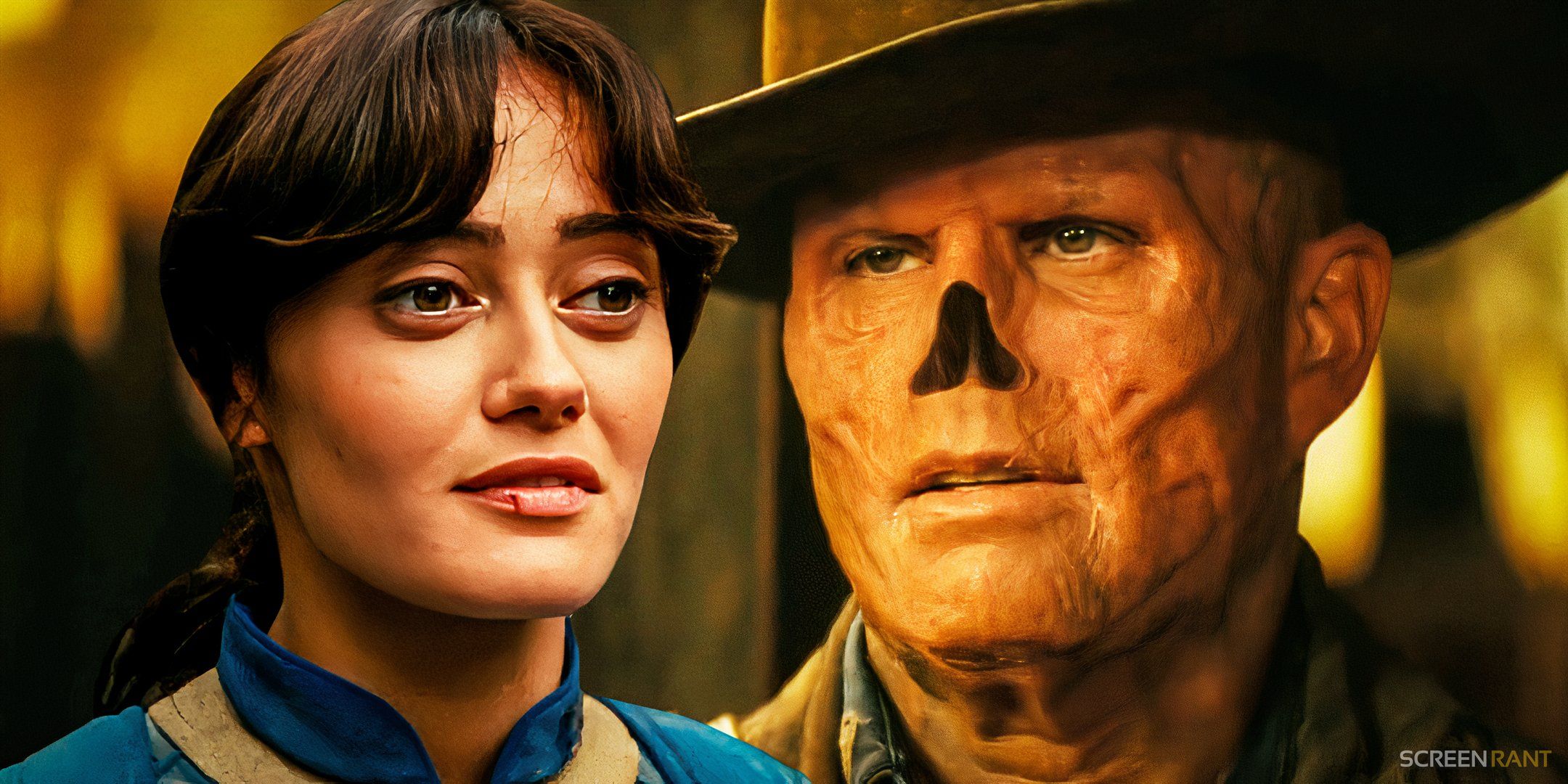
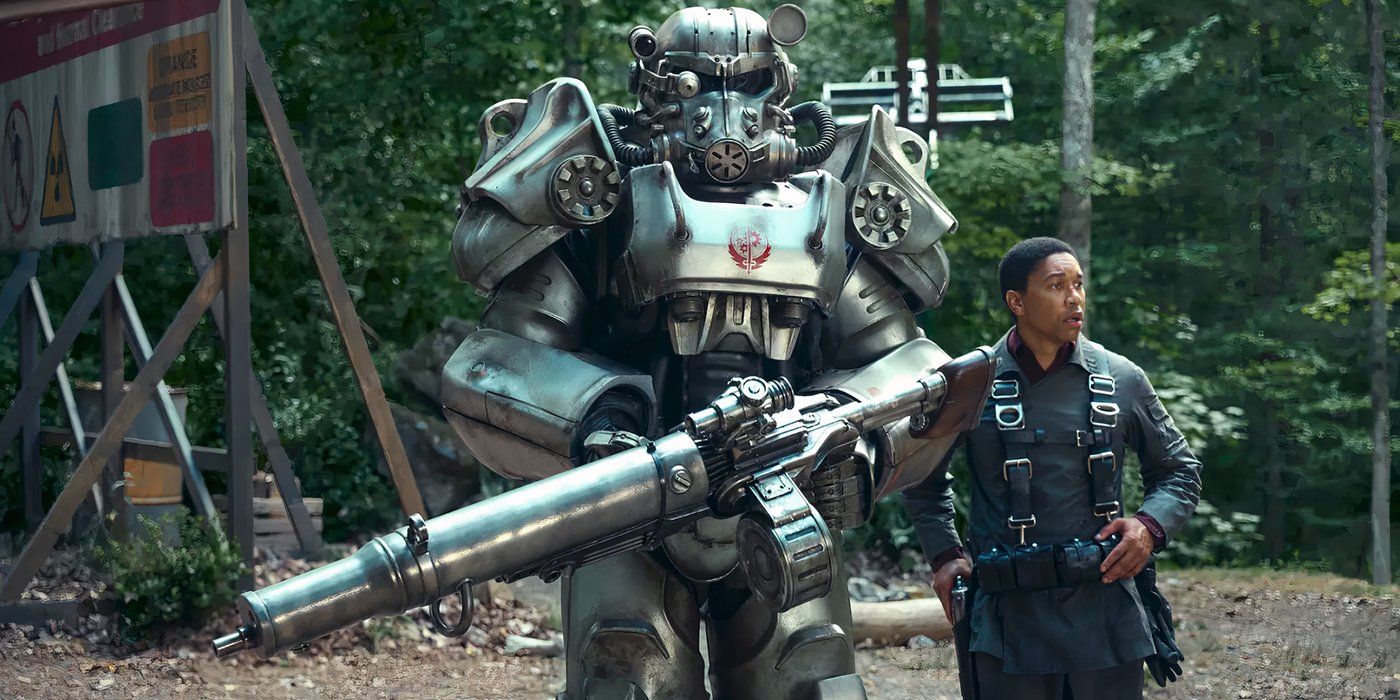
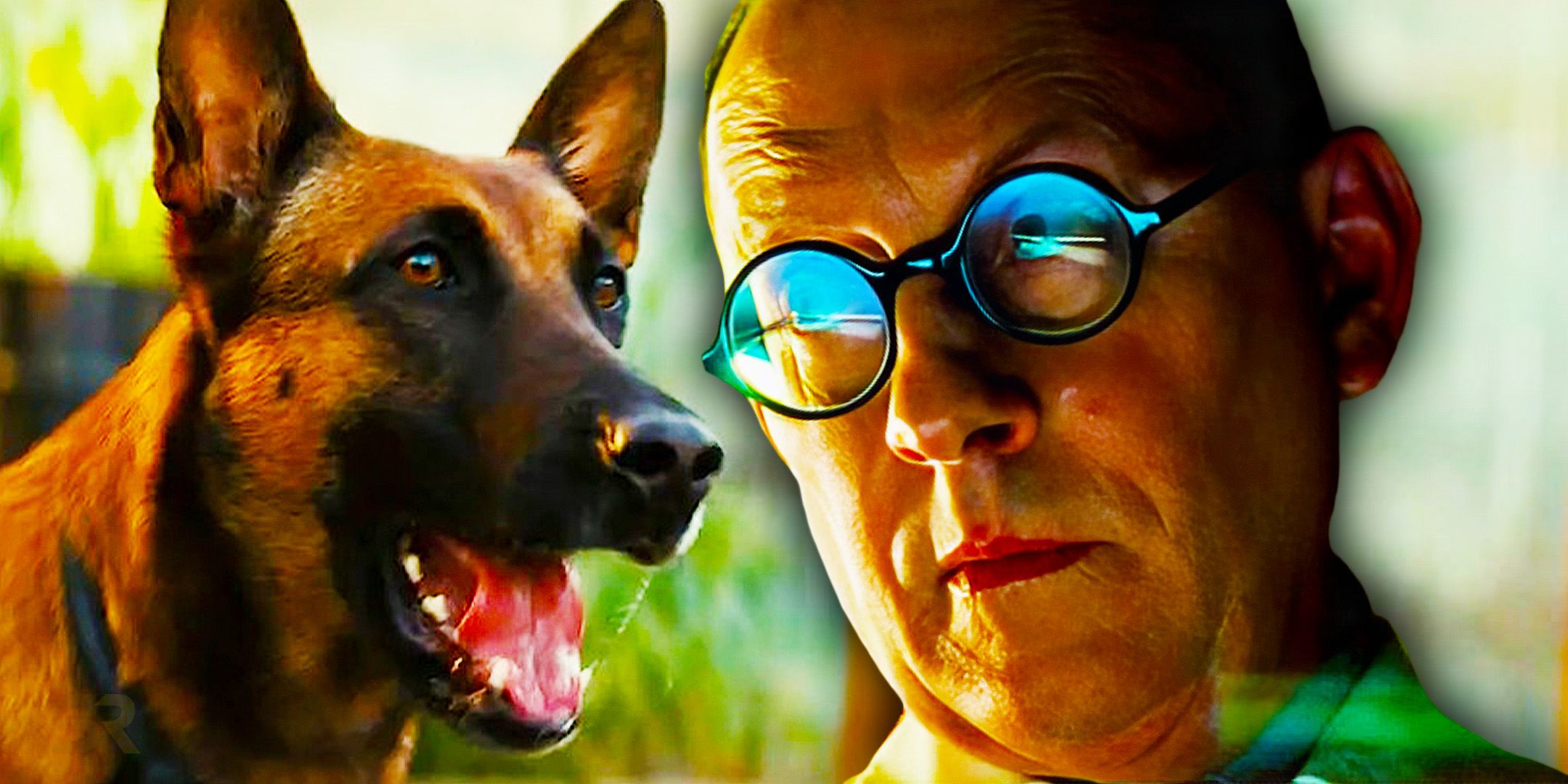
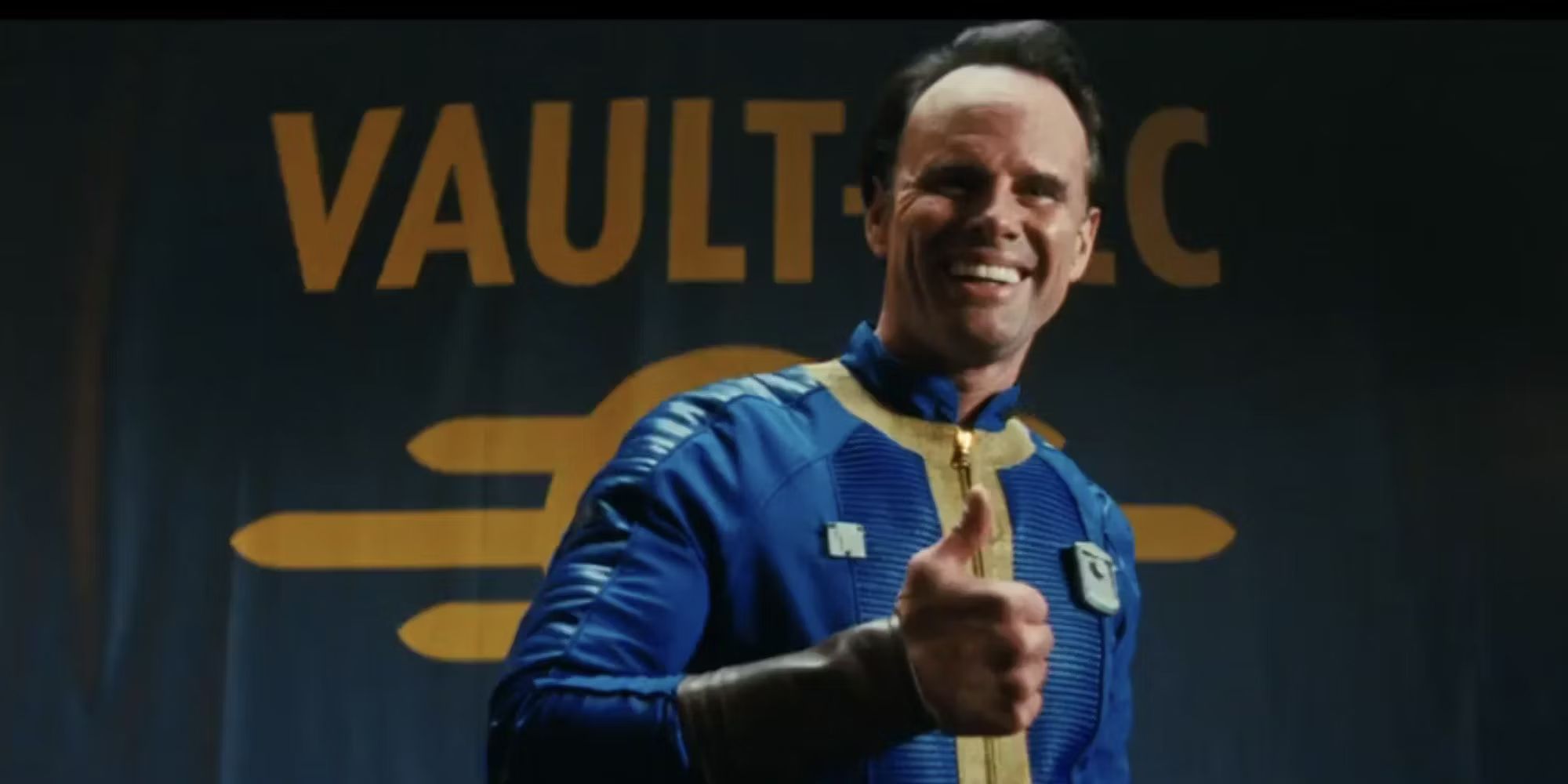
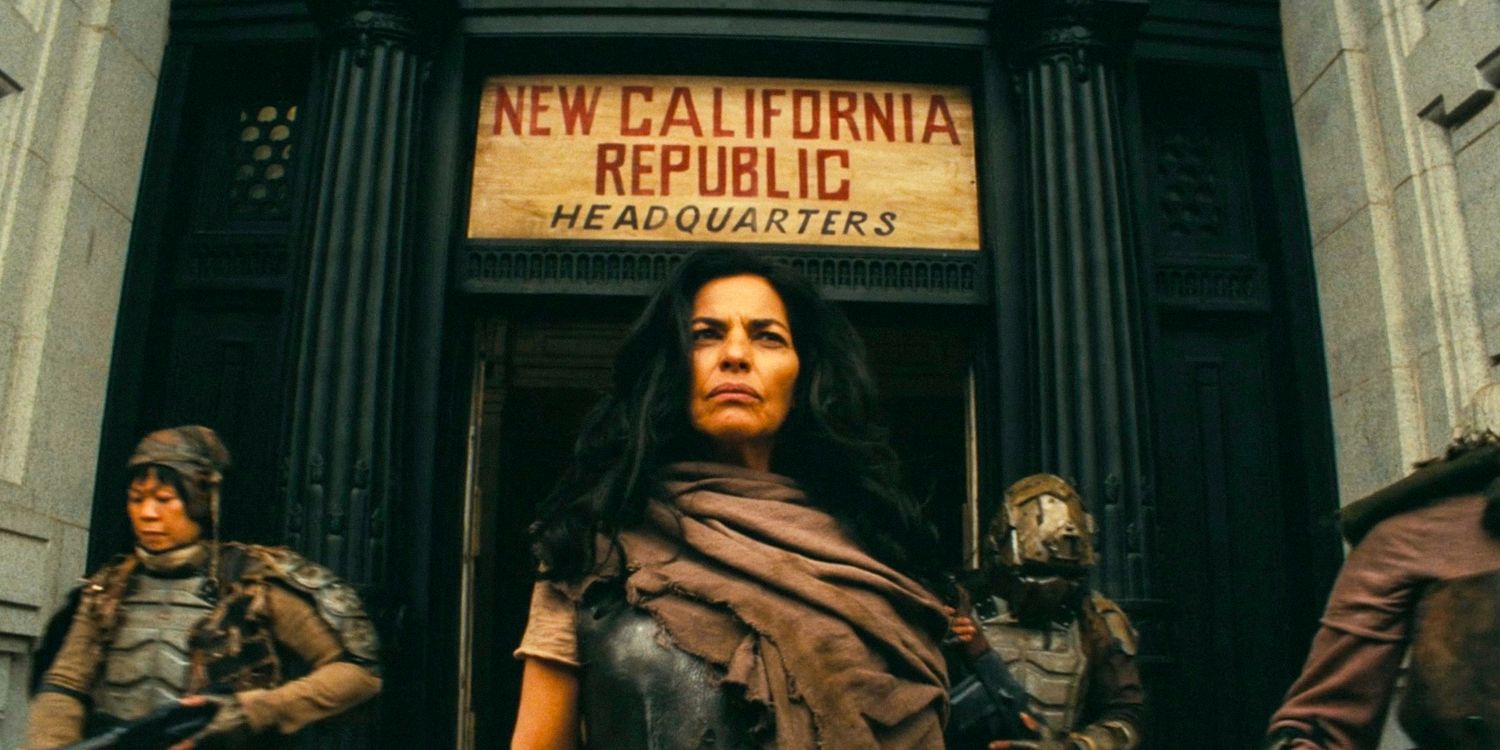





The announcement of a Fallout TV show will have brought to mind the idea of seeing established characters and events from the game series but in a live-action setting. In other words, some fans may have been expecting an adaptation rather than a contribution to the same continuity via a new medium. The reason the latter happened rather than the former is that every Fallout game is a standalone story. Sure, certain elements do cross over between installments, but they can all be enjoyed in isolation. So, Prime’s Fallout show followed that same rule.
The Fallout show could have adapted the existing stories from the games to create the live-action project, but that wouldn’t have offered much new to the franchise. Rather than starting from scratch, Prime’s unorthodox decision to keep the games as part of the main canon allowed all the lore from the source material to retain an unusual amount of relevance. When the games’ ethos of never retreading the same narrative ground is considered, Prime’s approach to making the Fallout TV show makes so much more sense.




